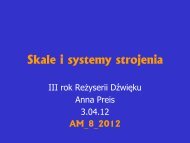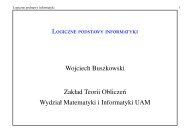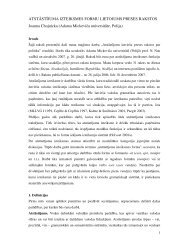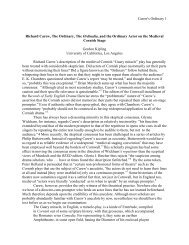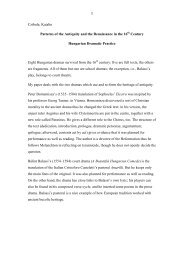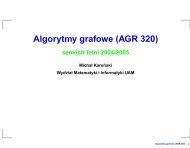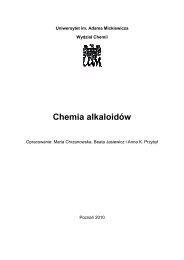Amir Weiner Getting to Know You
Amir Weiner Getting to Know You
Amir Weiner Getting to Know You
Create successful ePaper yourself
Turn your PDF publications into a flip-book with our unique Google optimized e-Paper software.
8 AMIR WEINER AND AIGI RAHI-TAMM<br />
earlier had been part of the Russian Empire and thoroughly studied by the<br />
former regime. 7<br />
Did this matter? On one level, the <strong>to</strong>talitarian enterprise was not<br />
dependent on social realities but rather the opposite. If there was a gap between<br />
ideology and the social, political, and economic landscape, the latter had <strong>to</strong><br />
adjust <strong>to</strong> the former. The more relevant questions were who knew what, what<br />
did they want <strong>to</strong> know, and how did they get their information. Here, the<br />
Soviets s<strong>to</strong>od on firm ground. By their own admission, the security organs<br />
were still in a post-traumatic state when they <strong>to</strong>ok on the task of infiltrating<br />
the annexed populations in 1939–40. Having lost scores of seasoned agents<br />
and lacking genuine local intelligence networks, the People’s Commissariat of<br />
Internal Affairs (NKVD) had <strong>to</strong> rely on young, often unqualified employees<br />
from the Soviet interior who did not command indigenous languages—some<br />
726 new agents in western Ukraine alone—and a handful of local communists<br />
who had spent most of the past decade behind bars. Despite these challenges,<br />
information gathering marshaled on. 8<br />
The Third Department of the NKVD, which was in charge of gathering<br />
information on the political and social theaters prior <strong>to</strong> the invasion, exhibited<br />
an impressive command of the situation. Assisted by the Foreign Ministry<br />
and the embassy in Warsaw, which were set <strong>to</strong> the task in early spring, the<br />
security services acquired detailed knowledge of the Polish domestic scene.<br />
The 53-page report it composed prior <strong>to</strong> the invasion accurately mapped<br />
all political parties, civic associations, and military organizations across the<br />
ethnic divide in Poland, including leading personnel and membership. 9 The<br />
task of dealing with these groups was relegated <strong>to</strong> special operational groups,<br />
whose small number was telling. Their assignments ranged from taking<br />
over communications and media, establishing temporary administrations<br />
in each area occupied by the Red Army, imposing political and ideological<br />
7 Vladimir Zenzinov, Vstrecha s Rossiei: Kak i chem zhivut v Sovetskom Soiuze. Pis´ma v<br />
Krasnuiu Armiiu 1939–1940 (New York: n.p., 1944), 332; Peter Gornev, “The Life of a Soviet<br />
Soldier,” in Thirteen Who Fled, ed. Louis Fischer (New York: Harper, 1949), 37; Natsyianal´ny<br />
arkhiu Respubliki Belarus´ (NARB) f. 4, op. 21, d. 1683, ll. 50–51, 57.<br />
8 Vik<strong>to</strong>r Chebrikov et al., eds. Is<strong>to</strong>riia Sovetskikh organov gosudarstvennoi bezopasnosti<br />
(Moscow: KGB, 1977), 305–6, 308. Notably, this KGB internal textbook was prepared for<br />
the training of the agency’s officers.<br />
9 Federal´naia sluzhba bezopasnosti Rossiiskoi Federatsii and Ministerstwo spraw<br />
wewnętrznych i administracji Rzeczpospolitej Polskiej, Polskie podziemie na terenach Zachoniej<br />
Ukrainy i Zachodniej Białorusi w latach 1939–1941/Pol´skoe podpol´e na terri<strong>to</strong>rii Zapadnoi<br />
Ukraïny i Zapadnoi Belorussii, 1939–1941 gg. (Warsaw and Moscow: RYTM, 2001), 1:36–<br />
106; Donal O’Sullivan, “Die Sowjetisierung Osteuropas 1939–1941,” Forum für osteuropäische<br />
Ideen- und Zeitgeschichte 2, 2 (1998): 118.



